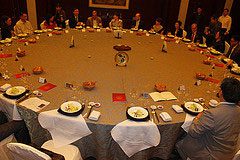
Last month, CFED held their bi-annual Assets Learning Conference. It featured a range of topics that touched on an array of asset-building issues and included networking opportunities, mobilized conversations with policymakers, and celebrations of the progress of the field with well-deserved awards for forward thinking organizations, such as Hawaiian Community Assets and Step Up Savannah. The closing plenary identified a number of topics that needed to be pursued further, including worker-owned businesses and cooperatives, additional case studies for innovative products and services, collaborations with faith-based communities, CRA and responsible banking, support for local policy work, and more holistic approaches to asset-building through health and multi-generational approaches.
I was particularly struck by a comment that encouraged conference attendance by more of the actual clients and families of the organizations work with. How might such a thing be carried out when each of us are spread out over a large country–Hawai`i being across the Pacific Ocean–and the families we work with are often struggling just to make it through the day to day?
Shortly after the conference, I was able to see a developing cooperative in action as I visited Evergreen Cooperatives in Cleveland, Ohio, and heard their story within the context of Ohio’s reality as a struggling Rust Belt state. As I drove through the city to Evergreen’s facilities, I couldn’t help but notice the rows of abandoned houses. I admired the way the anchor institutions in the area put aside their rivalries and came together to figure out how to reinvigorate the struggling economy of the area. I learned about the struggle of each of the cooperative entities to balance the need to provide true wealth-building opportunities for members in economically depressed areas of the city while striving toward economically sustainability. I was inspired by the opportunities the cooperative provided for member self-governance as well as innovative asset building efforts for individual workers, which had broader reaching consequences for their families and the community at-large. Most of all, I was humbled by the warmth of the members who greeted me as a guest, and the excitement and pride they had as they shared their experiences.
As I drove out of the Evergreen facility, the area took on a new light as I recognized the efforts of the members of the cooperatives and felt energized by their enthusiasm. My visit also helped me to see the issues identified at the conference in a very real and tangible way. National convening is important to foster spaces for collaboration and learning, yet nothing beats seeing the reality on the ground in the communities in which we live, work, and play, and the families we share these experiences with.
What if there were a way, perhaps via scholarship, for the people we work with to join us to learn and share at conferences? This might create opportunities for them to understand the field in a context that makes most sense as they pursue their vision of wealth and navigate the silos that can exist in community development.
(Photo credit, Flickr user Philip, CC BY-NC)





Comments